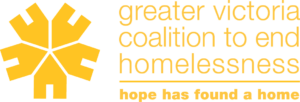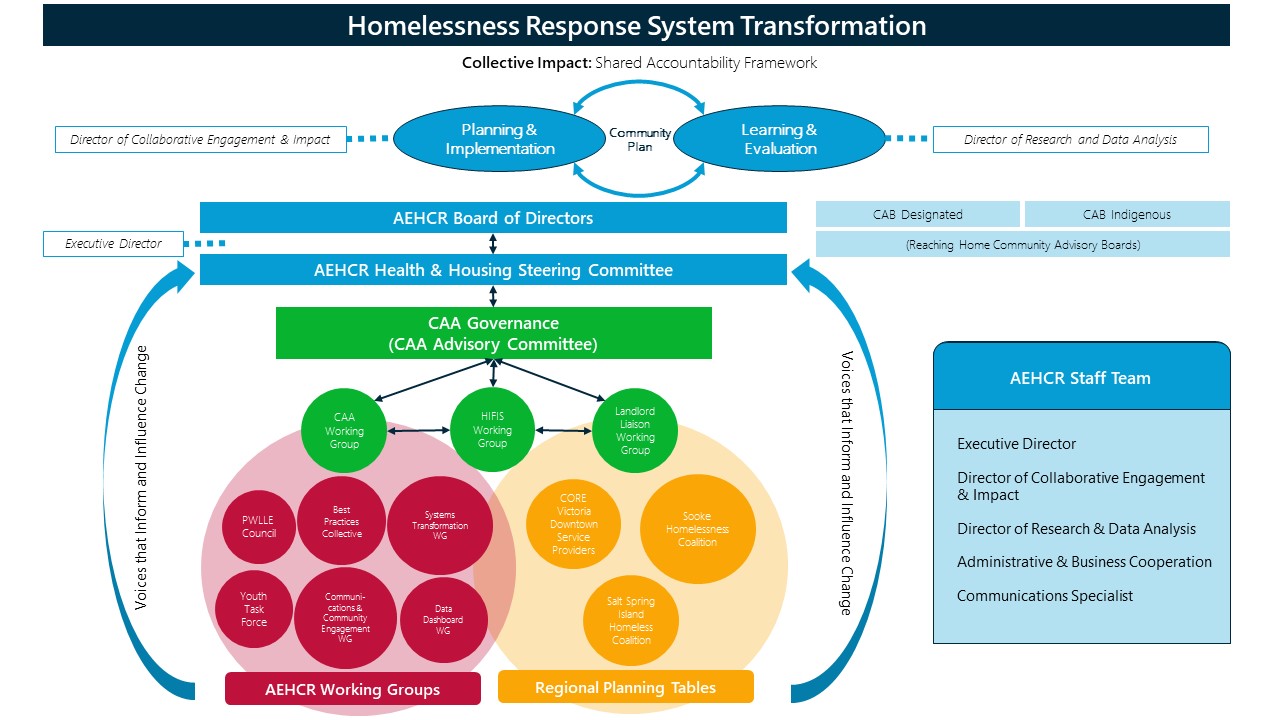The AEHCR Ceased Operations September 30, 2025
Who is AEHCR
The Alliance to End Homelessness in the Capital Region (AEHCR) started in 2008 as the Greater Victoria Coalition to End Homelessness (GVCEH) with a mission to end homelessness in the Capital Region.
The AEHCR consists of local housing, health & social service providers, non-profit organizations, all levels of government, businesses, post-secondary institutions, the faith community, people with lived & living experiences of homelessness, and members of the general public. This diverse membership referred to as the Alliance Partners, comes together to collectively address the needs of individuals experiencing homelessness in the Capital Region.
The AEHCR creates and optimizes synergistic opportunities among its partners as it builds on its focus on leading change toward Functional Zero Homelessness in the region and beyond, on growing partnerships to drive prevention, and on shaping a future where everyone has a safe place to call home.
Organization Background
In May 2007, then Victoria Mayor Alan Lowe struck a 120-day task force to recommend a service model and business plan that would provide better assistance to residents challenged with mental illness, addictions and homelessness.
The Mayor’s Task Force was charged with breaking down the issue of homelessness in Victoria and developing a new service delivery model that would be a substantial shift in the way we all respond to our community’s social and health challenges. It became apparent that Greater Victoria needed a community-owned solution to end homelessness for its residents. As a result of this thorough work, the community rallied and the Greater Victoria Coalition to End Homelessness Society was formed in February 2008.
Our Vision
A region, a province, and a country where everyone has a safe place to call home.
Our Mission
To ensure experiences of homelessness in the Capital Region by 2030 are rare, brief, and non-recurring and that housing and supports are culturally adaptive, creative, caring, and person-centered.
Functional zero is a concrete, and measurable approach to ending homelessness. When a community has reached functional zero, it means homelessness is managed by an adequate amount of services and resources. Simply put, it means that there are enough, or even more homelessness-serving services and resources than needed to meet the needs of individuals who are experiencing homelessness, or are transitioning out of homelessness.
This definition and approach to ending homelessness gives communities the autonomy to reflect on what ending homelessness would and should look like, in consideration of the amount of people experiencing homelessness in it’s varying forms, the amount of supports currently available, and the supports needed to fill those gaps.
Source: HomelessHub
Guiding Principles
People-centered
People come first. We will provide housing and supports in ways that best meet the needs of people experiencing homelessness rather than organizing based on our efficiencies or expertise.
Adaptability & Innovation
People will be supported along their continuum of care, as needed; care and support will be individualized to people’s needs, with an emphasis on integration into the community.
We embrace innovation and seek to learn from our actions and share that learning with the community.
Community Engagement
We build a broad range of support for our work and engage all community members in finding and implementing appropriate solutions.
Prevention
Identifying, mitigating, and advocating for systemic change that addresses the root causes of homelessness will be key components of our prevention work.
If you require urgent emotional support, including having thoughts of suicide and other mental health issues, please call Vancouver Island Crisis Line: 1-888-494-3888
Youth (under 25 years of age) may access youthspace.ca for online emotional support.
For other resources, including shelter availability, visit bc211.ca

